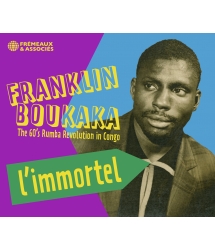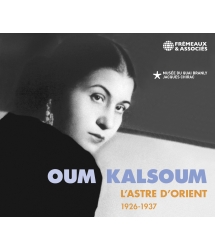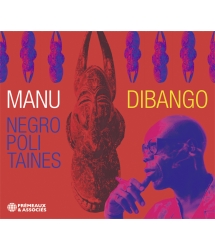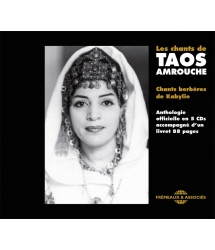- Our Catalog
- Philosophy
- Philosophers of the 20th century and today
- History of Philosophy (PUF)
- Counter-History and Brief Encyclopedia by Michel Onfray
- The philosophical work explained by Luc Ferry
- Ancient thought
- Thinkers of yesterday as seen by the philosophers of today
- Historical philosophical texts interpreted by great actors
- History
- Books (in French)
- Social science
- Historical words
- Audiobooks & Literature
- Our Catalog
- Jazz
- Blues
- Rock - Country - Cajun
- French song
- World music
- Africa
- France
- Québec / Canada
- Hawaï
- West Indies
- Caribbean
- Cuba & Afro-cubain
- Mexico
- South America
- Tango
- Brazil
- Tzigane / Gypsy
- Fado / Portugal
- Flamenco / Spain
- Yiddish / Israel
- China
- Tibet / Nepal
- Asia
- Indian Ocean / Madagascar
- Japan
- Indonesia
- Oceania
- India
- Bangladesh
- USSR / Communist songs
- World music / Miscellaneous
- Classical music
- Composers - Movie Soundtracks
- Sounds of nature
- Our Catalog
- Youth
- Philosophy
- News
- How to order ?
- Receive the catalog
- Manifesto
- Dictionnary











- Our Catalog
- Philosophy
- Philosophers of the 20th century and today
- History of Philosophy (PUF)
- Counter-History and Brief Encyclopedia by Michel Onfray
- The philosophical work explained by Luc Ferry
- Ancient thought
- Thinkers of yesterday as seen by the philosophers of today
- Historical philosophical texts interpreted by great actors
- History
- Books (in French)
- Social science
- Historical words
- Audiobooks & Literature
- Our Catalog
- Jazz
- Blues
- Rock - Country - Cajun
- French song
- World music
- Africa
- France
- Québec / Canada
- Hawaï
- West Indies
- Caribbean
- Cuba & Afro-cubain
- Mexico
- South America
- Tango
- Brazil
- Tzigane / Gypsy
- Fado / Portugal
- Flamenco / Spain
- Yiddish / Israel
- China
- Tibet / Nepal
- Asia
- Indian Ocean / Madagascar
- Japan
- Indonesia
- Oceania
- India
- Bangladesh
- USSR / Communist songs
- World music / Miscellaneous
- Classical music
- Composers - Movie Soundtracks
- Sounds of nature
- Our Catalog
- Youth
- Philosophy
- News
- How to order ?
- Receive the catalog
- Manifesto
- Dictionnary
PYGMEES DU CONGO : TRADITIONS ORALES DES M’BENGA
M'Benga Pygmies In The Congo
Ref.: 10112
Artistic Direction : PIERRE HUGUET
Label : PITHYS / FREMEAUX & ASSOCIES
Total duration of the pack : 1 hours 9 minutes
Nbre. CD : 1
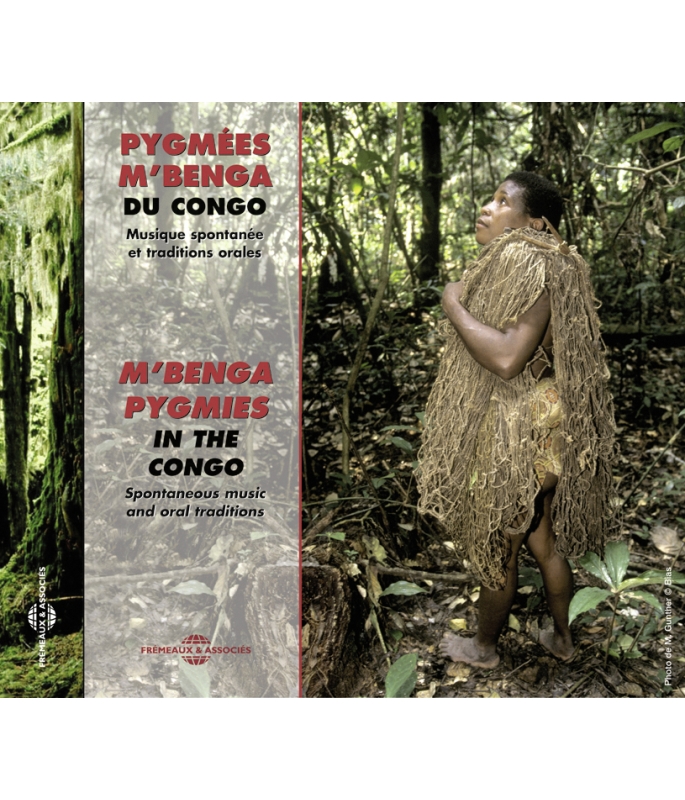
PYGMEES DU CONGO : TRADITIONS ORALES DES M’BENGA
PYGMEES DU CONGO : TRADITIONS ORALES DES M’BENGA
Spontaneous music and oral traditions of the M’Benga. Once in the forest the pygmies sing all the time, even in perfectly ordinary circumstances, even when there are neigher festivities nor initiation ceremonies. This record reflects the joy and emotion of the M’Benga voices in their everyday life, echoing through the equatorial forests of Africa. Includes a 16 page booklet with both French and English notes.
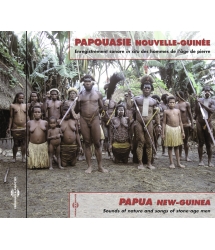

CHANTS ET MUSIQUE TRADITIONNELLE DES ANTANDROY
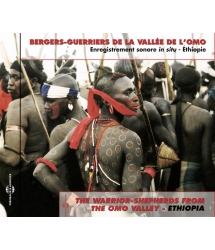
ETHIOPIA - THE WARRIOR-SHEPHERDS FROM THE OMO...
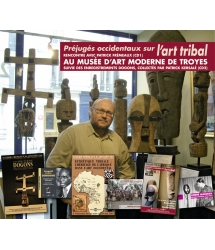
PATRICK FRÉMEAUX AU MUSÉE D’ART MODERNE DE TROYES...




-
PisteTitleMain artistAutorDurationRegistered in
-
1APPEL DE COHESION AUX ABORDS D UN CAMPPYGMEES DU CONGO00:01:081992
-
2APPRENTISSAGE DES CRIS DE L ANTILOPEPYGMEES DU CONGO00:02:221992
-
3VEILLEE DANS LA NUIT DE LA COMMUNAUTE AU COMPLETPYGMEES DU CONGO00:03:251992
-
4PLUS TARD DANS LA MEME NUITPYGMEES DU CONGO00:10:281992
-
5ENCORE PLUS TARDPYGMEES DU CONGO00:01:051992
-
6ABLUTIONS ET LAVAGES DE RHIZOMES DANS L APRES MIDIPYGMEES DU CONGO00:06:541992
-
7TROIS JEUNES FILLES LORS D UNE JOURNEE DE CUEILLETPYGMEES DU CONGO00:06:141992
-
8UNE JEUNE FEMME ET TROIS JEUNES FILLES DEVANT LEURPYGMEES DU CONGO00:03:051992
-
9TOUTE LA COMMUNAUTE APRES DEUX JOURNEES CONSACREESPYGMEES DU CONGO00:01:271992
-
10QUELQUES INSTANTS APRESPYGMEES DU CONGO00:02:121992
-
11ENCORE UN PEU PLUS TARD FIN DE L APRES MIDIPYGMEES DU CONGO00:02:581992
-
12UN ORAGE MENACE LE BOIS EST DEBITE EN PETITS MORCEPYGMEES DU CONGO00:05:091992
-
13DERNIER APRES MIDI DANS UN CAMPEMENT AVANT LE DEPAPYGMEES DU CONGO00:01:461992
-
14JUSTE APRES LA CONSTRUCTION D UN NOUVEAU CAMPEMENTPYGMEES DU CONGO00:07:151992
-
15DEUX JOURS PLUS TARD EN FIN DE MATINEE LES MEMESPYGMEES DU CONGO00:03:221992
-
16ABANDON D UN CAMPEMENT LA COLONNE D ETIRE DANS LAPYGMEES DU CONGO00:03:141992
-
17IMITATION DU CRIS D UNE ANTILOPE AU COURS D UNEPYGMEES DU CONGO00:02:171992
-
18UNE AUTRE CHASSE IMITATION DE CHIMPANZE PUIS DEPYGMEES DU CONGO00:03:141992
-
19LA FORET AU PETIT MATIN (THE FOREST EARLY IN THE MPYGMEES DU CONGO00:02:011992
M’BENGA PYGMIES IN THE CONGO
PYGMÉES M’BENGA DU CONGO
Musique spontanée et traditions orales
M’BENGA PYGMIES IN THE CONGO - Spontaneous music and oral traditions
Cet album a été réalisé d’après des enregistrements effectués en 1989 et 1990 au Congo. Durant plusieurs semaines, Pierre Huguet, Sylvain Cordier et Jean-Louis Boivin ont accompagné une communauté de Pygmées M’Benga dans un périple de chasse et de cueillette.Les prises de son portaient sur l’ensemble des voix de la forêt, hommes, oiseaux, insectes et mammifères. A tous moments et dans toutes circonstances les micros et les magnétophones étaient en place.Cela a permis très rapidement de les faire oublier des Pygmées et de saisir ainsi des instants d’une spontanéité rare.Dans un montage qui rappelle la présence de la forêt entre chaque séquence de chant ou de polyphonie, ce disque retrace le quotidien sonore des hommes.Bien qu’elles aient été ordonnées de façon chronologique, les différentes séquences n’ont pas été retenues selon des critères scientifiques ou démonstratifs, mais pour leur valeur illustrative, esthétique et émotionnelle.Cet album n’a par conséquent qu’un seul objectif : la reproduction d’une trace de la mémoire d’un compagnon de voyage des Pygmées M’Benga.Vassaux à l’orée des bois, souverains en forêt, ce sont les Pygmées. Timides et discrets aux abords des villages bantous, ils deviennent lutins joyeux, bruyants et chantants sur les pistes qui mènent au miel et à la chasse.
Dédaignant l’agriculture et le travail des métaux, mais très opportunistes, les M’Benga entretiennent depuis des siècles des relations d’échange qui leur donnent une maîtrise encore plus grande de la sylve équatoriale. Leur aisance y est merveilleuse. Leur esprit ludique, espiègle, transforme le quotidien en une fête presque permanente.La cohésion de la communauté tient sans doute parce qu’elle repose sur une grande liberté. D’un jour à l’autre, selon les humeurs du moment, les têtes changent dans le campement. Ainsi deux jeunes filles sont parties au petit matin, et un homme inconnu porteur d’un fusil arrive à la nuit tombante avec la dépouille d’un potamochère sur le dos.Où sont-elles donc allées ces demoiselles, et d’où vient ce nouveau personnage alors que le village le plus proche est à trois ou quatre jours de marche?La forêt fait corps avec le peuple Pygmée.La maîtrise de la forêt, c’est la certitude de s’y nourrir sans difficulté, d’y construire une hutte dès que l’on en ressentira le besoin, sans l’aide de quiconque.Le nomadisme des Pygmées est aussi à l’origine de cette aisance. Il permet de choisir le lieu et le moment où le miel abonde, où les fruits sont mûrs, où le gibier est présent.Ce style de vie traduit ainsi une profonde adaptation des hommes aux variations des ressources de la forêt, et évite une prédation trop intense sur une surface réduite. C’est la fluidité de la vie...La compagnie des M’Benga, au cours de ce nomadisme sylvestre amène à penser que la forêt est le réservoir de la culture et de l’identité pygmée. C’est une raison de plus pour l’aimer et redouter sa disparition.
De la Sangha à la N’Gnoki 1989-1990 Congo
Pierre Huguet
© 1992 PITHYS © 2005 GROUPE FRÉMEAUX COLOMBINI SAS
Séquences
01. Appel de cohésion aux abords d’un camp 1’08
02. Apprentissage des cris de l’antilope 2’22
03. Veillée dans la nuit de la communauté au complet (17 personnes) 3’25
04. Plus tard dans la même nuit 10’28
05. Encore plus tard 1’05
06. Ablutions et lavages de rhizomes dans l’après-midi 6’54
07. Trois jeunes filles lors d’une journée de cueillette 6’14
08. Une jeune femme et trois jeunes filles devant leur hutte en fin de matinée 3’05
09. Toute la communauté après deux journées consacrées à la récolte du miel 1’27
10. Quelques instants après 2’12
11. Encore un peu plus tard, fin de l’après-midi 2’58
12. Un orage menace. Le bois est débité en petits morceaux pour entretenir le feu dans une hutte durant la pluie 5’09
13. Dernier après-midi dans un campement avant le départ du lendemain 1’46
14. Juste après la construction d’un nouveau campement,toutes les femmes devant leur hutte 7’15
15. Deux jours plus tard en fin de matinée, les mêmes femmes à nouveau devant leur hutte 3’22
16. Abandon d’un campement, la colonne s’étire dans la forêt 3’14
17. Imitation du cri d’une antilope au cours d’une chasse à proximité d’un camp 2’17
18. Une autre chasse. Imitation de chimpanzé, puis de gorille 3’14
19. La forêt au petit matin 2’01
english notes
M’Benga PYGMIES
Spontaneous music and oral traditions
This album was compiled using recordings made in 1989 and 1990 in the Congo. For several weeks Pierre Huguet, Sylvain Cordier and Jean-Louis Boivin accompanied a community of M’Benga pygmies on a hunting and gathering expedition.The recordings cover all the voices in the forest, belonging to men, birds, insects and mammals. The microphones were ready at all times, whatever the circumstances. The pygmies were consequently able to forget about them very quickly and it was possible to capture moments of extraordinary spontaneity.The album is edited in such a way as to remind us of the forest’s presence, between each sequence of song or polyphonic recital. It reconstitutes the sounds that make up the daily life of the pygmies. Although they are presented in chronological order the various sequences were not chosen for scientific or didactic reasons, but rather for their aesthetic and emotional value, their quality as an illustration.In consequence this album has only one aim: the reproduction of part of the memory of a fellow traveller with the M’Benga pygmies.Vassals at the edge of the wood, the pygmies are like kings once they regain the forest. Timid and discreet on the outskirts of Boutu villages, they become joyful imps, noisy and full of songs as they follow the tracks which lead to their honey caches and hunting grounds.The M’Benga are bord opportunists and have scorned agriculture and metalwork. Over the centuries they have maintained barter relations which secure their mastery of the equatorial forests. Here they are perfectly at ease and their playful, mischievous spirit transforms everyday life into and endless celebration.The cohesion of their community is almost certainly related to the considerable liberty which they enjoy.
From one day to the next, depending on how the mood takes them faces change in the camp. Two young women leave in the early morning and an unknown man, carrying a rifle, arrives at nightfall with the carcass of an African Water Hog on his back. Where do the women go; where does this person come from? The nearest village is three of four days away on foot. The forest is one with the pygmy people.Their mastery of the forest environment leaves them certain to find food without difficulty, to build a hut whenever they feel the need, without requiring any help.Their nomadic habits also contribute to this relaxed attitude. They feel free to choose the place and time where honey is abundant, fruit is ripe and game is available. Their life style reflects a high degree of adaptation to the fluctuating resources of the forest and they naturally avoid being over-predatory on too small an area of land. Such is the fluidity of their life...The company of the M’Benga, during this nomadic outing through the woods, led me to conclude that the forest acts as a reservoir for the pygmy culture and identity. This is one more reason to care for it and fear its disappearance.
From la Sangha to la N’Gnoki, Congo.1989-1990
Pierre Huguet
© 1992 PITHYS
© 2005 GROUPE FRÉMEAUX COLOMBINI SAS
Sequences
01. Call to gather on the edge of the camp 1’08
02. Apprenticeship of antelope cries 2’22
03. Nocturnal vigil for the entire community (17 persons) 3’25
04. Later the same night 10’28
05. Even later 1’05
06. Ablutions and washing of rhizomes during the afternoon 6’54
07. Three girls during a day spent gathering fruit 6’14
08. A young woman and three girls in front of their hut at the end of the morning 3’05
09. The entire community after two days spent harvesting honey 1’27
10. A few moments later 2’12
11. A little later, at the end of the afternoon 2’58
12. A storm threatens. Wood is chopped into little bits to keep the fire going in a hut, for as long as it rains 5’09
13. The last afternoon in a camp before leaving the next day 1’46
14. Just after building a new camp; all the women in front of their hut 7’15
15. Two days later, at the end of the morning, the same women,once again in front of their hut3’22
16. The camp is abandoned. Then, the column stretches out into the forest 3’14
17. Imitation of antelope cries during a hunt close to the a camp 2’17
18. Another hunt. Imitation of a chimpanzee, then a gorilla 3’14
19. The forest early in the morning 2’01
CD PYGMÉES DU CONGO © Frémeaux & Associés (frémeaux, frémaux, frémau, frémaud, frémault, frémo, frémont, fermeaux, fremeaux, fremaux, fremau, fremaud, fremault, fremo, fremont, CD audio, 78 tours, disques anciens, CD à acheter, écouter des vieux enregistrements, albums, rééditions, anthologies ou intégrales sont disponibles sous forme de CD et par téléchargement.)
